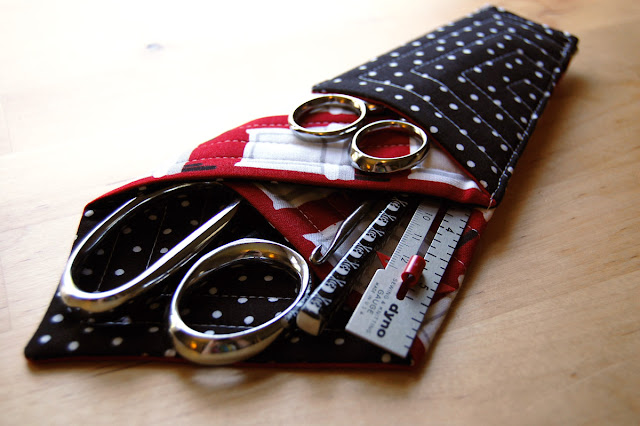300+ Years of Color Theory: Opticks
This book is included in a reading list on the history of Color Theory. Find the homepage for the series here.
Opticks by Sir Isaac Newton, first published in 1704
Don’t let this book fool you, it’s not as difficult a read as you might think! It's written in plain English, and it's pretty awesome to follow along with Newton in his experiments and thought process to his groundbreaking discoveries about light. In Part I, Newton describes the many experiments he conducted with prisms and light in incredible detail. In Part II he establishes his theories on light based on the experiments presented in Part I.
Newton is clearly approaching the subject of the visual spectrum as a scientist and not a color theorist, yet his discoveries are a clear first step in understanding human perception of color. He also created one of the first circular color systems in which countless colors can be plotted and identified. Newton and his ideas and theories on color would influence other color theorists, scientists, philosophers, and artists for years to come.
Newton is clearly approaching the subject of the visual spectrum as a scientist and not a color theorist, yet his discoveries are a clear first step in understanding human perception of color. He also created one of the first circular color systems in which countless colors can be plotted and identified. Newton and his ideas and theories on color would influence other color theorists, scientists, philosophers, and artists for years to come.
It's thanks to Newton that we order colors in "rainbow" order, as in the Visual Spectrum discovered by Newton. Previous to this publication, humans tended to order color by value, or light & dark, instead of color order (so like white, yellow, orange, red, green, blue, violet, and black going from light to dark).
In Book I, Part II Newton cuts right to the heart of it all by proposing that rays of light are not in themselves colored, but have the power to cause the sensation of color. I mean, come on! How amazing is it that hundreds of years before scientists really understood and can prove this concept, Newton imagines it to be so. Brilliant!
He first begins experimenting with light in 1666 when he decides to take a closer look into previous popular views that colors formed by light shining through a prism are inherent within the prism, probably caused by impurities in the glass. He has an inkling that there's more going on that meets the eye, and he's definitely up to the challenge.
Newton finds every which way to shine light through a prism (sometimes two, three, or more prisms simultaneously) to get to the bottom of how or why this band of colors seems to appear. He names the band of color a Spectrum after the Latin word spectrum meaning apparition (as in ghostlike apparition). Like I mentioned above, he begins to think of these different colors as being composed of waves; different colors possess different sized waves. He then begins to make comparisons between the colors in the spectrum and musical notes and scales.
He notes that just as sound in a ringing bell or musical string creates waves of sound traveling through the air, so also the rays of light reflecting from an object create waves that the eyes sense as colors. In a musical scale of 7 notes, individual notes can be combined to create new chords and harmonies. Newton thinks "ah-ha!" when he makes this comparison, and names 7 individual colors in his visual spectrum to correspond with 7 notes of the musical scale. Just as musical notes, these visual notes can be combined to create new combinations and chords. Newton names these colors Red, Orange, Yellow, Green, Blue, Indigo, and Violet (also known as ROY G. BIV!).
Next Newton does something extraordinary with his scale of colors. Mathematician and philosopher Descartes created an illustration of the musical scale where the 7 notes form a circle, pictured above.
Newton also creates a similar circle with his spectrum of 7 colors, pictured above. Newton's wheel isn't exactly as orderly or symmetrical as our modern day wheels, but it is an amazing beginning.
To Newton, the 7 major chords or colors he has named are his “Primary Colors.” This idea of Primaries will develop to mean the basic building block of a color system in later years. He writes very briefly about the mixing of colors within the wheel, noting that the Primaries mix together to create all the other colors, and also that mixing colors across from one another on the wheel creates a color “not be perfectly white, but some faint anonymous color. For I could never yet by mixing only two primary colors produce a perfect white.”
He notes that just as sound in a ringing bell or musical string creates waves of sound traveling through the air, so also the rays of light reflecting from an object create waves that the eyes sense as colors. In a musical scale of 7 notes, individual notes can be combined to create new chords and harmonies. Newton thinks "ah-ha!" when he makes this comparison, and names 7 individual colors in his visual spectrum to correspond with 7 notes of the musical scale. Just as musical notes, these visual notes can be combined to create new combinations and chords. Newton names these colors Red, Orange, Yellow, Green, Blue, Indigo, and Violet (also known as ROY G. BIV!).
Next Newton does something extraordinary with his scale of colors. Mathematician and philosopher Descartes created an illustration of the musical scale where the 7 notes form a circle, pictured above.
Newton also creates a similar circle with his spectrum of 7 colors, pictured above. Newton's wheel isn't exactly as orderly or symmetrical as our modern day wheels, but it is an amazing beginning.
To Newton, the 7 major chords or colors he has named are his “Primary Colors.” This idea of Primaries will develop to mean the basic building block of a color system in later years. He writes very briefly about the mixing of colors within the wheel, noting that the Primaries mix together to create all the other colors, and also that mixing colors across from one another on the wheel creates a color “not be perfectly white, but some faint anonymous color. For I could never yet by mixing only two primary colors produce a perfect white.”
Newton saw proportionally different amounts of colors in the spectrum and preserved these proportions within the color wheel, which is why it looks a little off-kilter or asymmetrical compared to modern color wheels.
The center of Newton's illustration of the color wheel "O" represents all colors coming together to form white light. The line YO moving from the center out is meant to plot the intensity or tint of the color; fully saturated at Y and completely white at O. So, any color could be plotted on this circle by first finding the mixture of the color hue in the outer ring, then moving into the center to represent the amount of white added to the color. He also notes that while the red and violet combine to create shades of purple (magenta), these colors do not appear within the spectrum as viewed through the prism.
The center of Newton's illustration of the color wheel "O" represents all colors coming together to form white light. The line YO moving from the center out is meant to plot the intensity or tint of the color; fully saturated at Y and completely white at O. So, any color could be plotted on this circle by first finding the mixture of the color hue in the outer ring, then moving into the center to represent the amount of white added to the color. He also notes that while the red and violet combine to create shades of purple (magenta), these colors do not appear within the spectrum as viewed through the prism.
Newton gives an example of plotting a color within this circle and then notes that while this is a system that can be used to plot colors perceived by the senses, it is not a mathematically accurate system.
This basic Color Theory model, with colors organized in hue order around a color wheel (fully saturated at the outer ring and changing in tint towards a white center), will be used again in other systems and become a base for some of the most famous systems still in use today.
For fun, check out the Color Calculator, a modern RGB version of Newton’s wheel. The tool will give you the RGB codes for any color you choose and allows you to play with established color harmonies.
Newton was the first to discover the truth about light; white light is made up of a full spectrum of colored light, each color different from the others. He goes further to propose that all the colors in the universe come from these individual colors within the light and that we see color in objects because they inherently reflect back only certain colors of light. Below, my very favorite quote from Newton's Opticks on this subject.
"For the rays to speak properly are not colored. In them there is nothing else than a certain power and disposition to stir up a sensation of this or that color. For as sound in a bell or musical string, or other sounding body, is nothing but a trembling motion, and in the air nothing but that motion propagated from the object, and in the sensorium 'tis a sense of that motion under the form of sound; so colors in the object are nothing but a disposition to reflect this or that sort of ray some copiously than the rest; in the rays they are nothing but their disposition to propagate this or that motion into the sensorium, and in the sensorium they are sensations of those motions under the forms of colors."
"For the rays to speak properly are not colored. In them there is nothing else than a certain power and disposition to stir up a sensation of this or that color. For as sound in a bell or musical string, or other sounding body, is nothing but a trembling motion, and in the air nothing but that motion propagated from the object, and in the sensorium 'tis a sense of that motion under the form of sound; so colors in the object are nothing but a disposition to reflect this or that sort of ray some copiously than the rest; in the rays they are nothing but their disposition to propagate this or that motion into the sensorium, and in the sensorium they are sensations of those motions under the forms of colors."
If you’re interested, you can find this book for free online, it’s still in print so you can purchase a new or used copy through your favorite online seller, or find a copy through your local library.
My reading advice to you is to focus on Book I - Part II, as this is where Newton’s ideas and theories that apply to Color Theory are. Pay special attention to Proposition II-Theory II, and Proposition VI-Problem II. Then, if you’re up to it, tackle the rest of the book!











Comments